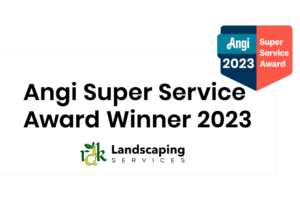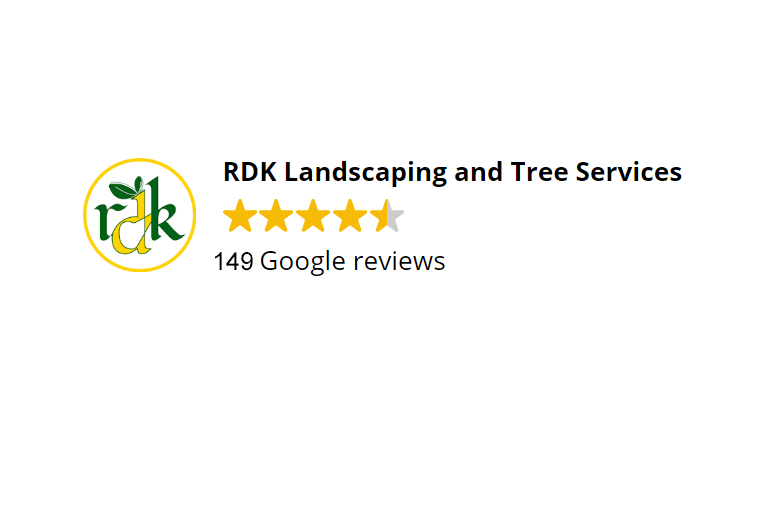Learn about soil types and DIY type testing to make sure you’re planting the right plants in the right place.
Avid gardeners and those in the landscaping industry have a lot to say about soil. Clay, sand, topsoil, mulch, amendment, compost — we use these terms regularly because land is so important to what we do. For those of you who claim to have ‘thumbs’, I’d like to share a little gardening secret. A successful garden starts with soil.
Soils vary greatly from region to region, accumulating geological processes, climate and
vegetation changes over time. There are countless products and amendments you can use to transform your soil, but the easiest way to create a low-maintenance, lush garden is to use the soil you have. Here you’ll learn how to perform a simple soil test in your garden and what soil type means for the success of your landscaping.
Right plant, right place. This mantra is repeated in RDK’s blog. Understanding where to plant begins with knowing the type of soil that exists. Soil type affects irrigation, grading, and plant performance. Explore the different soils in your landscape by looking closely at their textures. Many gardens have zones with slightly different soil types.
This garden in Buffalo NY USA, features drought-tolerant plants that thrive in the coarse, sandy soil of coastal areas.
Soil foundation
There are various systems to classify and describe soil types based on their composition. Soil triangles are the most useful and simple for the home gardener. Describes soil composition based on the amount of sand, silt, and clay present. These three types of soil particles have different structural properties due to their size and shape. Sand particles are the largest, silt particles are medium-sized, and clay particles are very small.

The base soil in this garden is likely very sandy, but improved soil with improved drainage and added nutrients is used in raised beds to grow vegetables. Gravel was added to the path to prevent erosion. If you’re planting directly in the ground, perform a soil test to determine your native soil type and select plants that will grow well in that soil. Learn how to determine your soil type below.
Soils can be described in three slope categories: sand, clay, and silt. Two common soil types are sandy loam and silty clay. The mixture or composition of different particle types gives soil its unique texture. Because of the structural and textural differences between soil types, water moves through each type in different ways. Plant roots also grow and respond to different types of soil depending on their structure.
Bog gardens display rings of different plant species depending on the water level in the soil. Wetlands and bogs typically have very high organic matter accumulations that impede drainage.
Soil type
Sand. Sandy soils have very good water drainage because sand particles are the largest soil component. The problem with sandy soil is that it drains too quickly and doesn’t retain enough moisture or nutrients for plants to grow. Plants that are drought tolerant and can exist in nutrient- poor soils are best suited to sandy soils.
Learn more about gardening in dry sandy soil. (Add Support Links)
Clay. Heavy clay soils do not drain well. With clay, the dirt particles are small and stick together, leaving no air spaces for water to penetrate. Therefore, the main problem with clay soils is poor drainage. There are many plants that can tolerate clay soil, and most native plants can tolerate the clay soil characteristics of a particular region.
Some areas have clay soils that expand when wet called expansive clays and contract significantly when dry. Another sign of clay is that the surface cracks when the soil dries. Clay soils also tend to compact easily, making water infiltration difficult.
Learn more about gardening in clay soil (Add Support Links)
Silt. Silty soils are typically found in areas where sediments are transported by rivers or streams. River floodplains typically have a layer of silt deposited over time by floods. The silt in this area creates very fertile soil. Soil with a high silt content is smooth to the touch and does not stick to your fingers like clay.
Silty soil can be a great garden soil because it is rich in minerals and nutrients. The disadvantage of silt is that it can be easily compressed. Plants native to riparian ecosystems and lowland forests thrive in silty soils.
Fertile land. A mixture of 40% sand, 20% silt, and 40% clay is called loam. Good loam soil is the easiest to garden because it retains moisture for plants, drains well, and has good structure. An ideal soil structure has a variety of soil particle sizes to allow air to occupy the spaces between soil particles and provide oxygen to the root zone. Plant roots actually need oxygen to effectively absorb water and nutrients.
Thin soil. In mountainous and rocky coastal areas, soil may be embedded between exposed bedrock. The soil present in these pockets may be gravelly and may lack the ability to hold large amounts of water or nutrients. These are very difficult soil conditions for gardening. A pioneer species, this plant can survive even drought and thin soil. If your climate is dry, experiment with succulents and sedum. If you live in the Pacific Northwest or coastal Maine, consider growing a garden with moss and lichens.
DIY soil type test
Pick up a handful of damp soil, squeeze it in your fist, and then release it. In this example using Midwestern clay soil from my garden, the soil held its shape even after I stretched my finger. This is a clear sign of clay.
If you squeeze your soil and have a hard time holding its shape or sticking together, you likely have sandy soil. Very sandy soil will fall off your fingertips when you squeeze it.
In the example here, I did the same DIY soil test using dark, rich material from my own vegetable garden. The soil in the beds was amended with compost.
Get In Touch:
Contact us about your project ideas and our team will be in touch with you within 24 hours! We are in the business for over 5+ years and Buffalo’s Top Rated.
RDK Landscaping – For more inspiration, visit our site.
Experts in tree removal, stump demolition, stump removal, tree trimming, tree mulching, tree pruning and emergency tree removal in Buffalo, NY!
Read our Reviews!!

 Todd Wilhelm2024-10-01Had sod installed at my house in Amherst. Job done very quickly and well. Highly recommended. Will be using them again for spring 2025 project.
Todd Wilhelm2024-10-01Had sod installed at my house in Amherst. Job done very quickly and well. Highly recommended. Will be using them again for spring 2025 project. Md Mia2024-09-27RDK Tree Service removed a large maple by the power lines. It was definitely not a easy job. They did the job safely and did it rather quickly. I will definitely recommend them for your tree services.
Md Mia2024-09-27RDK Tree Service removed a large maple by the power lines. It was definitely not a easy job. They did the job safely and did it rather quickly. I will definitely recommend them for your tree services. Bike Lover2024-09-27Residing in Buffalo NY, and needed to remove a large tree in the backyard and front yard. The crew did a fantastic job with removing it along with the stump. We are so impressed. Thank you RDK!
Bike Lover2024-09-27Residing in Buffalo NY, and needed to remove a large tree in the backyard and front yard. The crew did a fantastic job with removing it along with the stump. We are so impressed. Thank you RDK! selvachandran saravanan2024-09-25Did a job here in my rental property in Amherst of removing two 60-70ft pine trees with stump removal and prepped an area for parking. RDK Landscaping is the one you should go to with your tree and landscaping/hardscaping needs. They are just the best overall!!
selvachandran saravanan2024-09-25Did a job here in my rental property in Amherst of removing two 60-70ft pine trees with stump removal and prepped an area for parking. RDK Landscaping is the one you should go to with your tree and landscaping/hardscaping needs. They are just the best overall!! jackary Rootis2024-09-24I highly recommend them. Great crew, Super easy to work with. They’re doing a great job out here in East Amherst. Not only did I use them, but my neighbor and their son did as well and we couldn’t be happier.
jackary Rootis2024-09-24I highly recommend them. Great crew, Super easy to work with. They’re doing a great job out here in East Amherst. Not only did I use them, but my neighbor and their son did as well and we couldn’t be happier. DIANE Abram: Toot-Toot Daycare2024-09-21I hope these pictures speak for itself. I had called couple of companies to my property in Northampton, Buffalo, but only RDK Landscaping had come out so quick to give a quote for a project we started and couldn’t finish. They were so quick, efficient and had completed the project in about 2 days. They did a beautiful job, and answered all my questions throughout the entire process. I am so very thrilled about the results and could not recommend more! They are doing wonderful projects.
DIANE Abram: Toot-Toot Daycare2024-09-21I hope these pictures speak for itself. I had called couple of companies to my property in Northampton, Buffalo, but only RDK Landscaping had come out so quick to give a quote for a project we started and couldn’t finish. They were so quick, efficient and had completed the project in about 2 days. They did a beautiful job, and answered all my questions throughout the entire process. I am so very thrilled about the results and could not recommend more! They are doing wonderful projects. Dan Duggan2024-09-19RDK Landscaping did an amazing job! We had 8 dead ash trees at our property in Clarence that needed to be taken down given their proximity to the house and garage, in addition to two trees close to the power lines. I was very impressed with how quickly Roy and his team responded, came out to the property and got the job done. I would highly recommend them!
Dan Duggan2024-09-19RDK Landscaping did an amazing job! We had 8 dead ash trees at our property in Clarence that needed to be taken down given their proximity to the house and garage, in addition to two trees close to the power lines. I was very impressed with how quickly Roy and his team responded, came out to the property and got the job done. I would highly recommend them! Andres Martinez2024-09-14Everybody at RDK Landscaping was a pleasure to deal with, we had a big project with them to clear up some really overgrown gardens beds around our garage, they went above and beyond making our space useable again. Once the project was complete they made sure to clean everything up and even cleared some weeds we had on our driveway that we hadn’t even mention to them. Can’t recommend them enough and will be calling them first for any future landscaping projects.
Andres Martinez2024-09-14Everybody at RDK Landscaping was a pleasure to deal with, we had a big project with them to clear up some really overgrown gardens beds around our garage, they went above and beyond making our space useable again. Once the project was complete they made sure to clean everything up and even cleared some weeds we had on our driveway that we hadn’t even mention to them. Can’t recommend them enough and will be calling them first for any future landscaping projects. Esther Guess2024-09-12The guys were quick and effective at getting all that ivy down. Great work!
Esther Guess2024-09-12The guys were quick and effective at getting all that ivy down. Great work!





